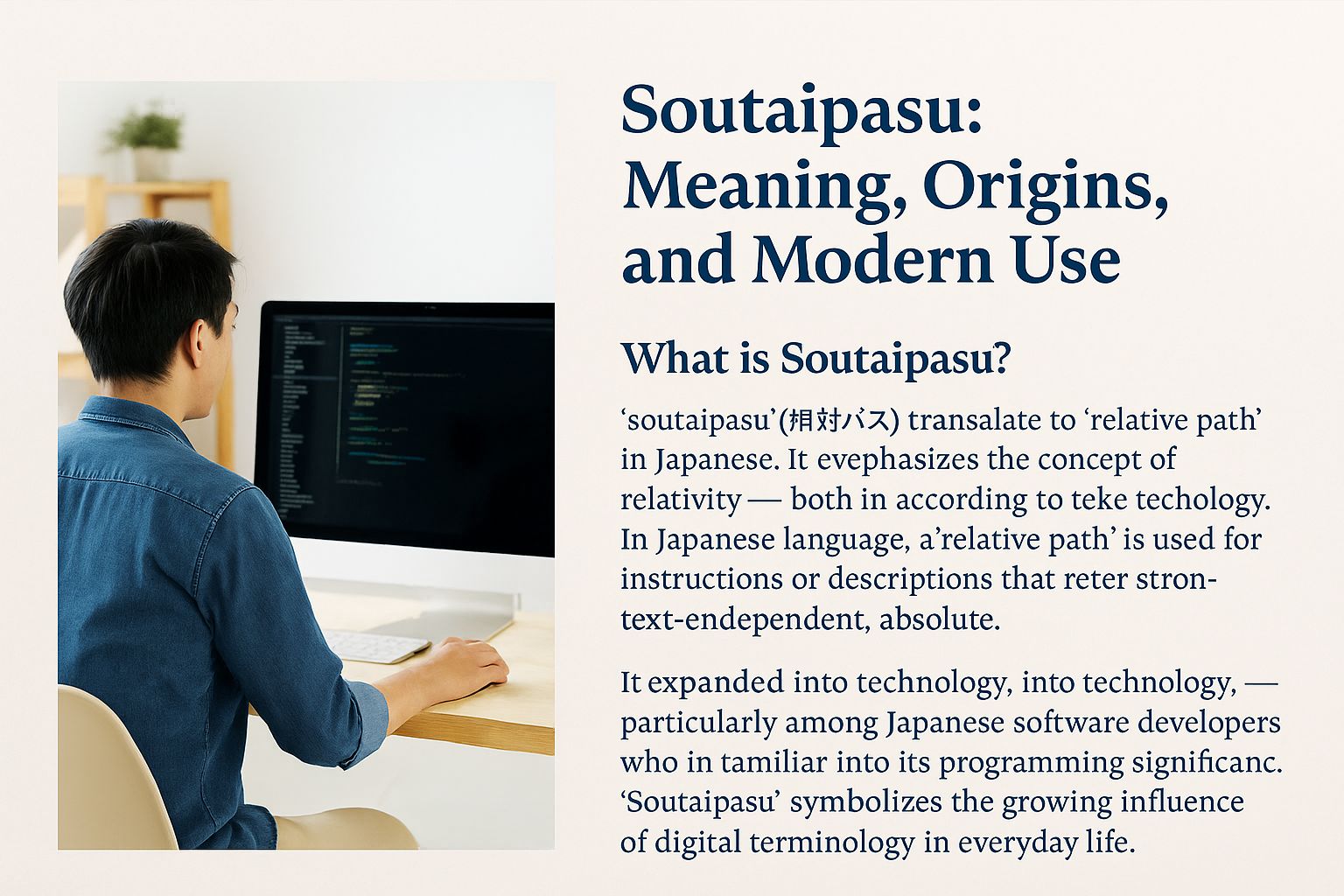What is Soutaipasu?
Soutaipasu (相対パス) is a Japanese term that translates to “relative path” in English. It’s commonly used in the world of coding and file structures. A relative path tells a computer where to find a file in relation to the current folder you’re working in, rather than pointing to the file’s exact location on the device.
How Soutaipasu Impacts Programming
The term combines:
– “Soutai” (相対) meaning “relative”
– “Pasu” (パス), derived from the English word “path”
The concept emerged with early computer programming and web development, where file navigation and organization were essential for building websites and software.
Soutaipasu vs Absolute Path
Today, soutaipasu is a basic concept every developer learns early. It is commonly used in:
– Website development (HTML/CSS linking)
– Coding environments like Python or Java
– Project folders where structure needs to stay flexible and portable
Why is it Important?
Using relative paths (soutaipasu) allows developers to move projects between systems without breaking links. It saves time and ensures better collaboration across teams.
Conclusion
While soutaipasu is a technical term, it reflects a broader concept of smart, organized design. Whether you’re a coder, a student, or just exploring the digital world, understanding this term helps you navigate the structure of files and folders more effectively.

